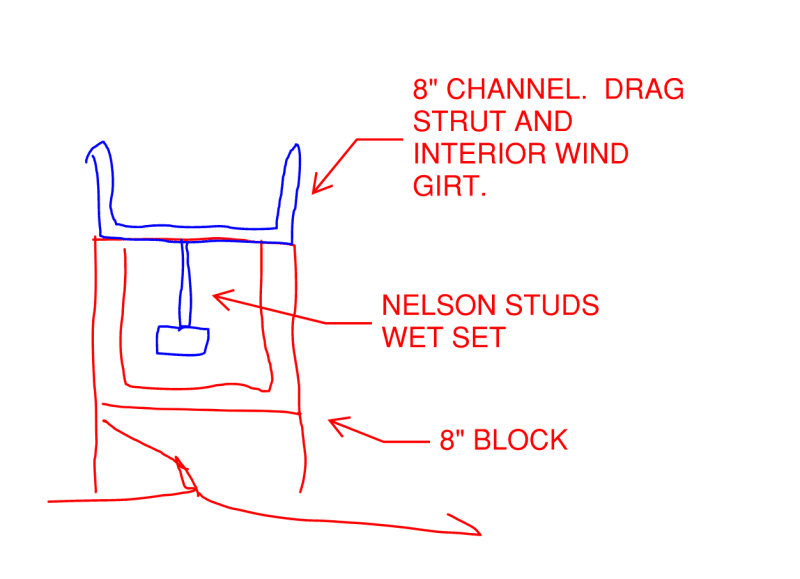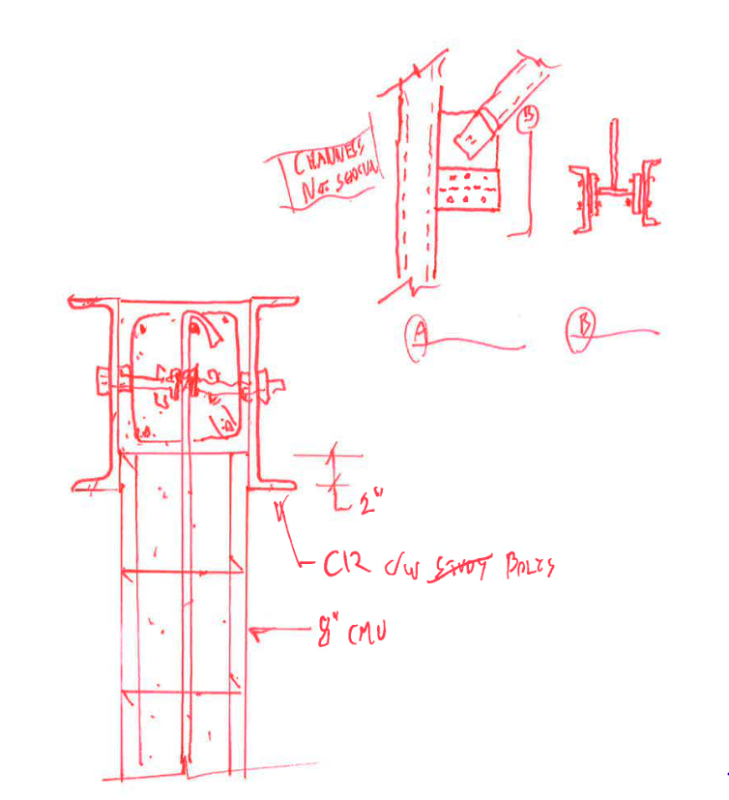Got the situation below. I've pitched post installed anchors (Hilti HUS) for the fastening. There's a desire to use nelson studs but, presumably, those would be wet set. I'm concerned about the wet set nelson studs for these reasons:
1) Issues with wet setting anchors in general compromising capacity.
2) Not sure the grout will be well consolidated if there's a rush to get the channel on before it sets. Does bond beam grout get vibrated?
3) Contractor might not manage the sequencing and I'll be stuck detailing a post installed solution anyhow.
How do we feel about the viability of the nelson stud option?

1) Issues with wet setting anchors in general compromising capacity.
2) Not sure the grout will be well consolidated if there's a rush to get the channel on before it sets. Does bond beam grout get vibrated?
3) Contractor might not manage the sequencing and I'll be stuck detailing a post installed solution anyhow.
How do we feel about the viability of the nelson stud option?



